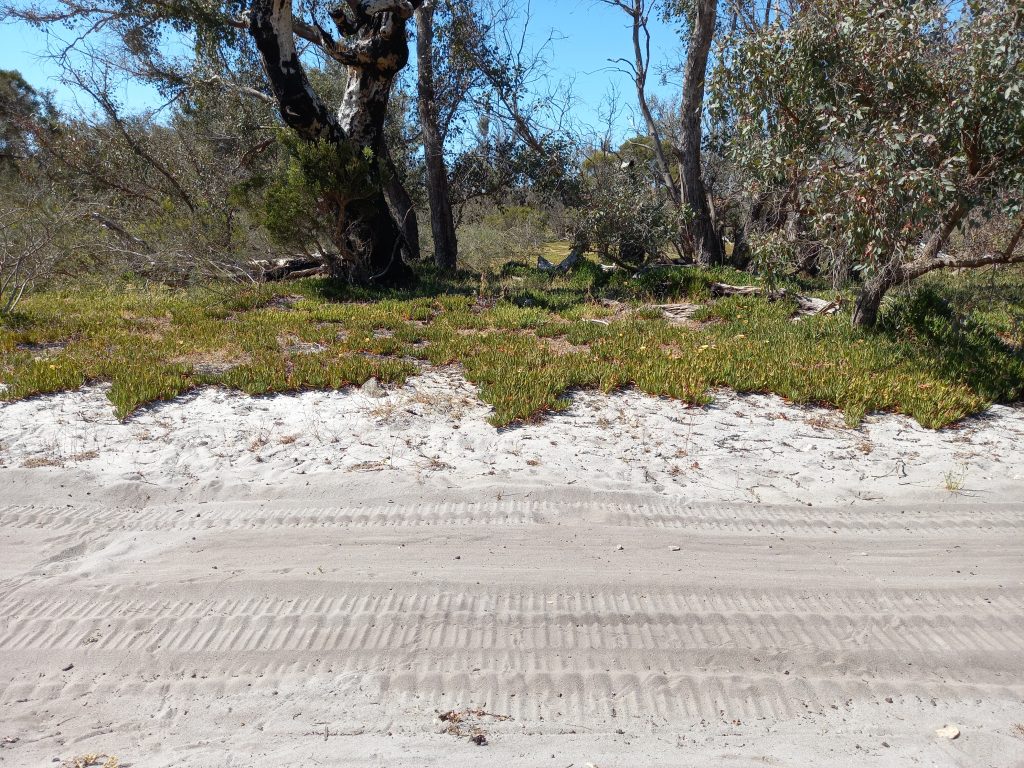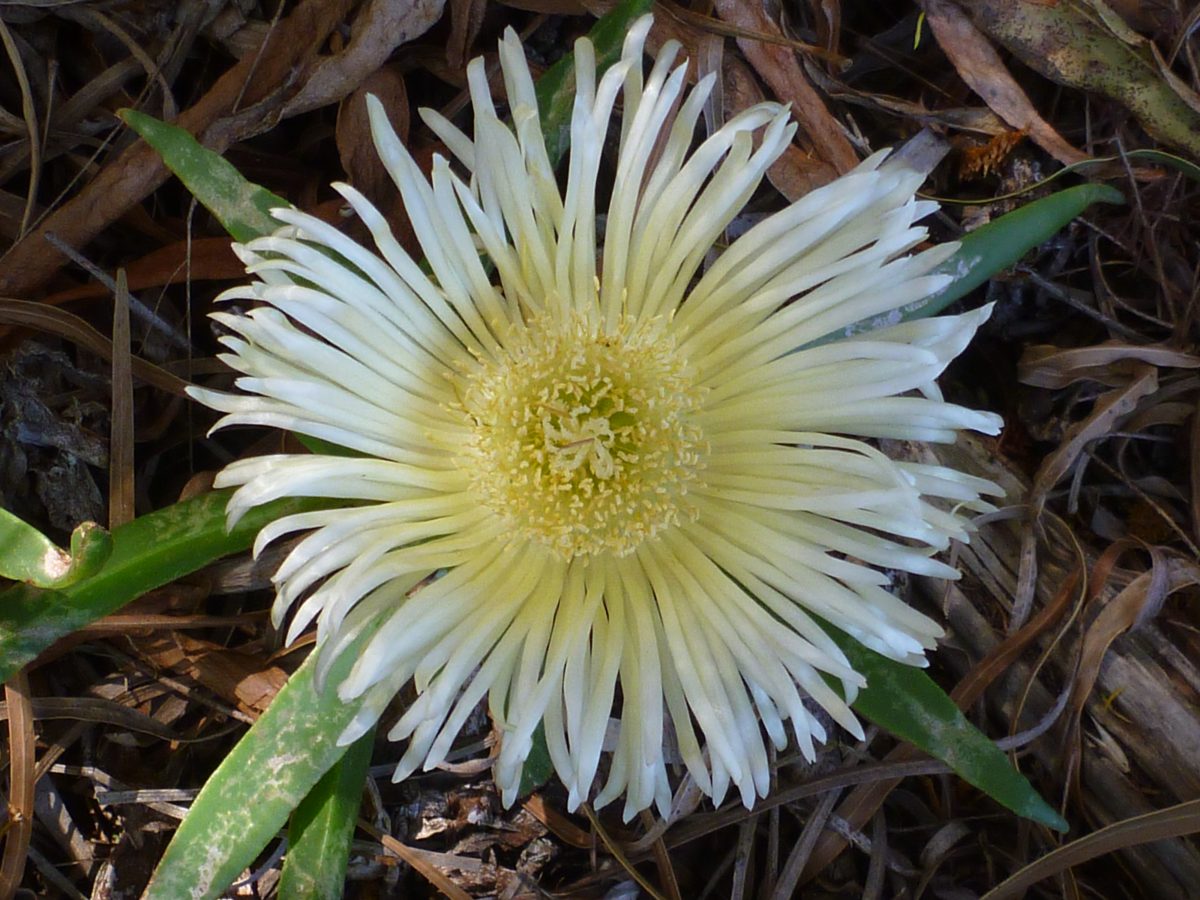Taxonomy
Carpobrotus sp. (Aizoaceae) are commonly called pigface in Australia, and it’s a complex genus that consists of several species, that most people think all are native. Carpobrotus edulis, commonly called Hottentot fig or Cape fig, is a widespread perennial succulent that originates in South Africa and has naturalised in most Mediterranean countries in the world. Its particularly weedy on sandy soils in coastal areas, and can form monocultures in winter-wet depressions and sandy paddocks. Its spread in Western Australia has been assisted by widespread amenity plantings facilitated by several local government areas and contractors. Carpobrotus aequilaterus commonly called Chilean pigface is less common, but not less aggressive as an invader. Also widespread throughout Mediterranean, but its origin is less clear. Most likely to be from South Africa, but it’s seen as a species unique to California and has been present there the 1600s (Vila et al 1998).
The native Carpobrotus species in Western Australia are:
Carpobrotus modestus. Inland pigface see https://florabase.dpaw.wa.gov.au/browse/profile/2796
Carpobrotus rossii, Krakalla,found near Shark bay see https://florabase.dpaw.wa.gov.au/browse/profile/2798
Carpobrtus virescens, found in southern coastal dunes from Shark Bay to Esperance see https://florabase.dpaw.wa.gov.au/browse/profile/2798
All three species will hybridise with the exotic Carpobrotus, and there is concern amongst botanists that it will eventually be impossible to discern native species form hybrids.
Ecology, biology and phenology
When not in flower, C. edulis is a low growing succulent with deep green leaves that resemble fingers. Usually triangular in section, leaves are variable in length from 1-15cm. Flowers are large, 5-6cm wide, yellow and present from September – January. Individual flowers persist for about a week, and then petals wither and the fruit can persist for several months where its either eaten by wildlife or falls below the plant. Carpobrotus fruits are edible and can sometimes be found pickled at specialist gourmet food stores and recipes online.
C. edulis readily hybridises with native species, and back again and therefore much of the Carporbrotus seen in gardens are a hybrid of unknown ancestry. Due to challenges in taxonomy, its only in recent years that revegetation programs have ensured Carpobrotus used in coastal revegetation are sourced from stock propagated from the native C. virescens and not C. edulis or hybrids.
Hybrid Carpobrotus flowers are variable in colour, from apricot to deep purple. C. edulis in its pure form is always yellow.
Legislation
Unfortunately, it’s not a reportable plant, but its still sold in mainstream nurseries.
Control options
C. edulis is shallow rooted, so can be easily hand pulled in small areas but will regrow from any fragments. Herbicide may be required for larger areas. The seed is short-lived but may persist for 2-3 years. Succulent species aren’t often successfully managed with control burns.
Found Carpobrotus edulis?
If you find Carpobrotus edulis, report it to DPIRD by MyPestGuide Reporter or iNaturalist. Reporting contributes to knowledge of the species range.
References
Hussey, B.M.J., Keighery, G.J., Dodd, J., Lloyd, S.G. & Cousens, R.D. (2007) Western Weeds. A guide to the weeds of Western Australia. 2nd Edition. The Plant Protection Society of Western Australia, Victoria Park.
Vila, M., Weber, E., & D’Antonio, C.,M. (1998). Flowering and mating system in hybridizing Carpobrotus (aizoaceae) in coastal california. Canadian Journal of Botany, 76(7), 1165-1169.


